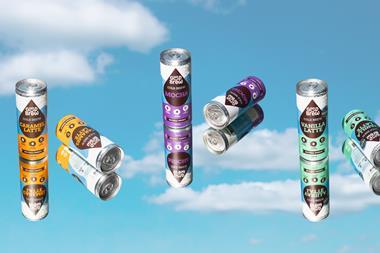
Coffee prices have been rallying as weather in Brazil and Vietnam, two of the world’s largest coffee producers, has threatened harvests.
A combination of extreme drought in Brazil and typhoons ravaging Vietnam has triggered a sharp increase in global coffee prices. Brazil, which dominates the arabica market, has seen a steep drop in production in the 2023-2024 season, with estimates pointing to output falling by as much as 20%.
Arabica coffee prices in the Latin American nation, which is responsible for around 40% of the world’s coffee production, averaged $254 per bag (60kg) in September – a 49% year-on-year increase.
Meanwhile, Vietnam – the world’s leading producer of the cheaper robusta bean that is commonly used in instant coffee – has been hit by heavy storms. Its coffee-growing regions in the Central Highlands were recently ravaged by Typhoon Yagi.
Average export prices of Vietnamese coffee in the first nine months of the year rose by nearly 60% to $3,896 per tonne compared with the same period last year.
According to commodity analysts Expana, in September, robusta prices hit a 47-year high and arabica prices rose to 13-year highs, “creating challenges for businesses that depend on these fragile coffee crops”.
The International Coffee Organization (ICO) reported that global coffee prices surged by nearly 20% in the third quarter of 2024, hitting their highest levels in almost a decade.
Read more: Coffee prices hit new highs over fears of global shortages
While recent better-than-expected rainfall in Brazil has helped contain arabica prices in the past fortnight, fears of global supply tightness in coming months, due to the country recording some of its worst levels of drought on record, have still contributed to commodity price increases.
“The expectation of outstanding rainfall in Brazil came to fruition, resulting in prolific flowering and lower prices,” Rabobank researchers noted. “While this has brought some short-term relief, damage done by the drought must have caused irreversible losses.”
Meanwhile, robusta coffee prices have been rallying as tropical storm Trami brought heavy rain to Vietnam’s key coffee-growing area, which could delay the harvest that typically runs from October to April, the bank’s experts said.
Output has already seen a decline – ICE-monitored arabica coffee inventories fell to a four-month low of 795,874 bags on 3 October, and ICE-monitored robusta coffee inventories fell to a five-month low of 3,934 lots last week, as per Nasdaq data.
Also pushing up prices is the fact that exports are on the rise too due to high demand from Europe and China, with the ICO reporting on 7 October that global coffee exports rose 6.5% year on year in August to 10.9 million bags.
Read more: Coffee prices to soar to new heights, Lavazza warns
As one of the world’s largest coffee-drinking regions, Europe will be hit hard by the effect of price hikes.
The Grocer’s Key Value Items tracker shows the average price of Nescafé Gold Blend instant coffee (100-200g) is up 10% compared with last month, at £6.99.
Nescafé’s cheaper instant coffee, its Original (100g) version, averaged at £3.22 across the mults this week – an increase of 7% from the same period last year.
Meanwhile, own-label instant coffee (100-200g) has remained stable compared with last month, at £1.07.



















No comments yet